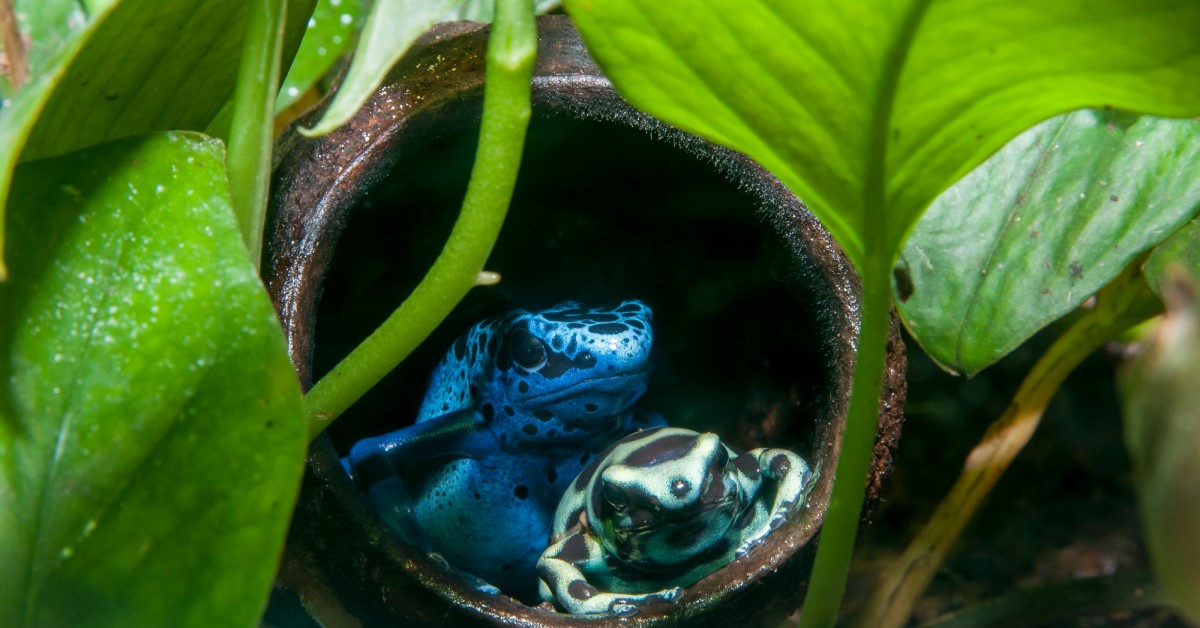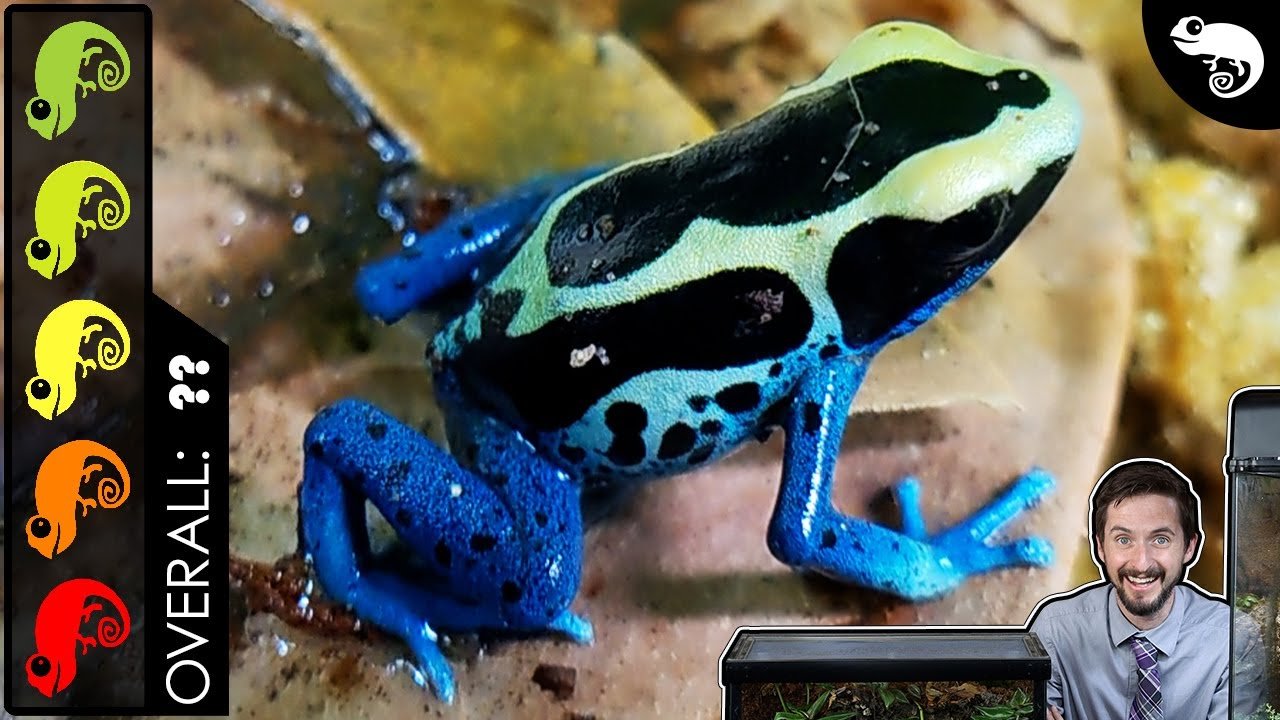The pet dart frog is a small, vibrant amphibian known for its toxic skin secretions. It requires a carefully maintained habitat and specific dietary needs.
Dart frogs are popular choices for experienced exotic pet owners due to their stunning colors and unique behaviors. Owning a pet dart frog is a commitment that requires attention to detail and knowledge of their care requirements. We will explore the basics of owning a pet dart frog, including their habitat, feeding habits, and important factors to consider before getting one as a pet.
So, if you are considering adding a pet dart frog to your home, read on to learn all about these fascinating creatures.
Choosing The Right Pet Dart Frog
When bringing a pet dart frog into your home, there are several important factors to consider. First and foremost, you need to think about the size of the enclosure needed for the frog’s habitat. Dart frogs require a terrarium that provides ample space for them to climb and explore. Another important consideration is the temperature and humidity levels within the terrarium, as these frogs thrive in warm and humid environments.
In addition, the diet of pet dart frogs should be carefully considered. These frogs have specific dietary needs and require a varied diet consisting of small insects such as fruit flies, pinhead crickets, and springtails. It’s crucial to ensure that you have a reliable source for obtaining these food items regularly.
Caring for pet dart frogs also involves providing suitable hiding places and plants to replicate their natural habitat. Live plants and leaf litter can provide cover and create a more natural environment for the frogs. Regular cleaning and maintenance of the terrarium are necessary to keep the habitat clean and the frogs healthy.
Factors To Consider When Choosing A Pet Dart Frog
Size and species requirements play a crucial role in selecting the perfect pet dart frog. These vibrant creatures come in various sizes and species, and it is essential to choose one that suits your preferences and available space. Some species may require larger enclosures, while others can thrive in smaller tanks.
When it comes to habitat setup and maintenance, it is important to create a suitable environment for your pet dart frog. This includes providing proper temperature, humidity, and lighting levels. Additionally, incorporating live plants and hiding spots can recreate their natural habitat and promote their well-being.
Diet and feeding is another crucial aspect to consider. Most dart frogs are insectivores and require a diet rich in small invertebrates such as fruit flies, pinhead crickets, and springtails. It is important to provide a varied and balanced diet to ensure their nutritional needs are met.
By considering these factors, you can create a suitable and enriched environment for your pet dart frog to thrive and enjoy a happy and healthy life.
Size And Species Requirements Of Pet Dart Frogs
Pet dart frogs come in a variety of sizes and species, each with unique requirements. It is important to have a good understanding of the specific needs of each species before deciding to bring one into your home. Popular pet dart frog species include the Dendrobates tinctorius, Phyllobates terribilis, and Ranitomeya imitator. These species vary in size, coloration, and toxicity levels. For example, the Dendrobates tinctorius can reach adult sizes of 1.5 inches, while the Phyllobates terribilis is known for being one of the largest dart frog species, measuring up to 2 inches. It’s crucial to provide adequate space in their enclosure and replicate their natural habitat as closely as possible. Remember to research each species thoroughly and consult with experts to ensure the well-being of your pet dart frogs.
Habitat Setup And Maintenance For Pet Dart Frogs
Creating an appropriate enclosure for your pet dart frog is crucial to ensuring its well-being and happiness. To maintain optimal conditions, temperature and humidity control, substrate, and decorations are key factors to consider.
Temperature and humidity control is vital in providing a comfortable environment for your dart frog. Keeping the temperature between 75-80°F is recommended, and a humidity level of 70-80% must be maintained. This can be achieved by using a reptile-specific heating pad and a misting system.
Choosing the right substrate is essential for your dart frog’s health. Opt for a combination of coconut fiber, sphagnum moss, and orchid bark. The substrate should be deep enough for the frog to burrow in, providing it with a sense of security.
Decorations play a crucial role in mimicking the frog’s natural habitat. Adding live plants such as bromeliads and orchids not only creates a visually appealing enclosure but also provides hiding spots. Incorporating branches, rocks, and leaf litter will further enrich the habitat.
Remember, maintaining an appropriate enclosure for your pet dart frog is an ongoing process. Regularly check and adjust temperature and humidity levels, clean the enclosure, and monitor the frog’s behavior and health to ensure a happy and thriving pet.
Diet And Feeding Of Pet Dart Frogs
Pet dart frogs have a specific diet that needs to be replicated in captivity for their optimal health and well-being. In the wild, dart frogs primarily feed on insects, such as ants, termites, beetles, and small spiders. To provide a similar diet in captivity, pet owners can feed their dart frogs a variety of live insects, including fruit flies, pinhead crickets, and small springtails. It is important to ensure that the insects are gut-loaded with nutritious foods to provide a balanced diet for the frogs.
To establish a feeding schedule for pet dart frogs, it is recommended to offer small amounts of food every day or every other day. This mimics their feeding habits in the wild, where they may encounter prey regularly. In addition to live insects, it is crucial to provide nutritional supplements to meet their dietary requirements. Calcium powder should be dusted on the live insects to provide essential calcium and promote proper bone development in dart frogs.
| Food Sources | Feeding Schedule | Nutritional Supplements |
|---|---|---|
| Live insects (fruit flies, pinhead crickets, small springtails) | Offer small amounts daily or every other day | Calcium powder dusted on live insects |

Credit: www.petassure.com
Caring For Pet Dart Frogs
Dart frogs are fascinating pets to own, but they require specific care to thrive in captivity. Handling and taming dart frogs should be done with caution, as they have delicate skin that is highly sensitive to oils and chemicals. It is best to avoid touching them unless necessary, and always wash your hands thoroughly before and after interacting with them.
Common Health Issues and Disease Prevention are important aspects of dart frog care. Regular habitat cleaning is crucial to prevent the buildup of bacteria or parasites. Monitoring the temperature, humidity levels, and providing a suitable diet can also help prevent health issues. Consulting a veterinarian who specializes in exotic pets is recommended to ensure proper care.
Understanding the breeding and reproduction of dart frogs is also important if you plan on breeding them. Research their specific mating habits and requirements, such as temperature, humidity, and the availability of suitable breeding sites.
Frequently Asked Questions Of Pet Dart Frog
What Kind Of Habitat Does A Pet Dart Frog Need?
A pet dart frog requires a vivarium with high humidity levels and plenty of hiding places. It should have a substrate of live moss or leaf litter and a water feature for drinking and breeding. The enclosure should be well-ventilated and maintain a temperature between 75 and 80 degrees Fahrenheit.
What Do Pet Dart Frogs Eat?
Pet dart frogs mainly eat small invertebrates such as fruit flies, pinhead crickets, and springtails. These can be purchased from pet stores specializing in reptiles and amphibians. It’s important to provide a varied diet to ensure proper nutrition and a healthy pet.
Can I Handle Or Touch My Pet Dart Frog?
It is generally not recommended to handle or touch pet dart frogs. Dart frogs have sensitive skin that can absorb toxins from human hands, leading to health issues or even death. These frogs are best enjoyed from a distance, and any necessary handling should be done by experienced caretakers for specific purposes, like veterinary care.
Conclusion
Owning a pet dart frog can be an exciting and rewarding experience. From their vibrant colors to their low-maintenance requirements, these unique amphibians are sure to captivate any pet lover. Whether you’re a beginner or an experienced pet owner, a dart frog can make a great addition to your household.
With proper care and attention, you’ll be able to create a safe and enriching environment for your new companion. So why wait? Consider bringing home a dart frog and embark on an unforgettable journey with these fascinating creatures.
